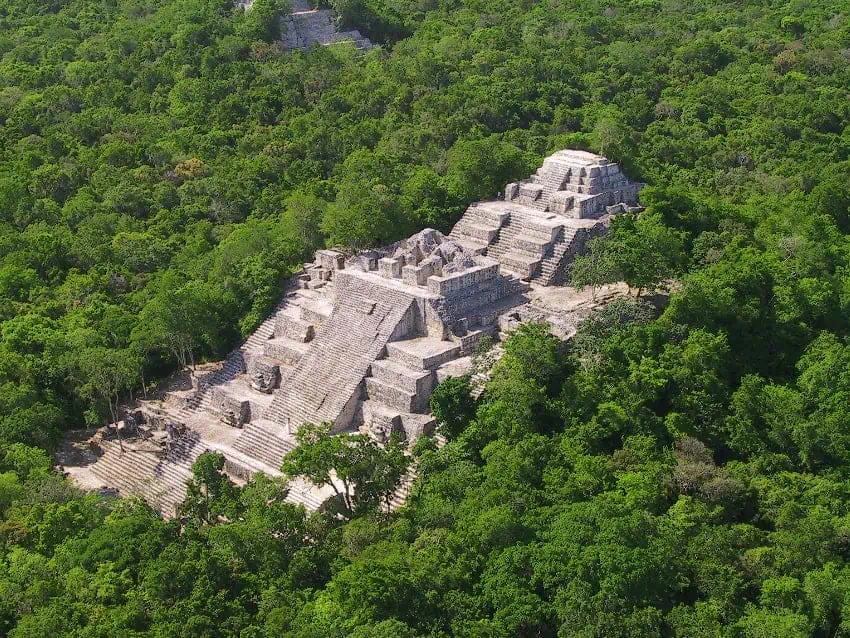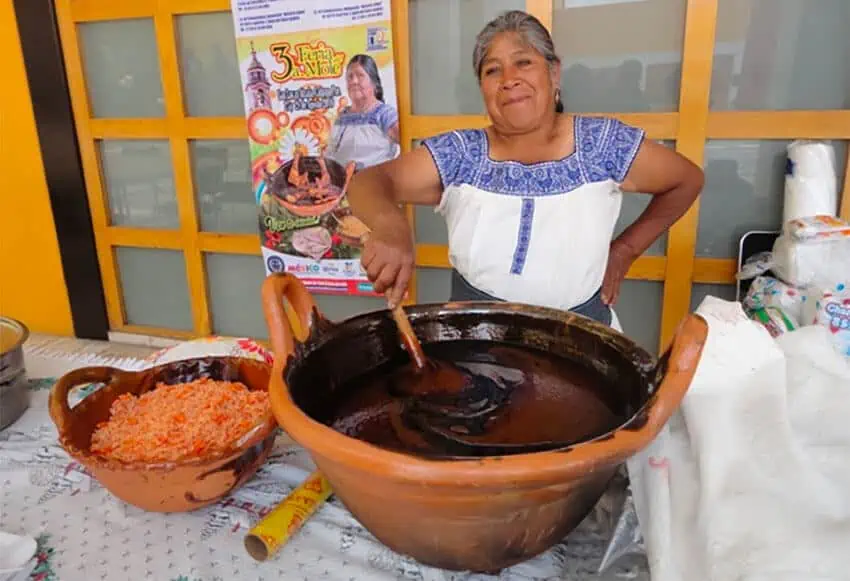Trump’s tariffs and accelerating trends in robotics and AI should be a wake-up call for Mexico.
Part 2: Why is a rethink of the Mexican economy necessary?
Part 3: What could a rethink of the Mexican economy look like?
The purpose of this three-part series is to reflect on the emerging trends of trade protectionism (tariffs), AI and robotics, consider the potential impacts on Mexico and foster a discussion on possible solutions. Please share your thoughts in the comments section and let’s have an inspiring and engaging discussion and debate.
Part 3: What could a rethink of the Mexican economy look like?
As mentioned in Parts 1 and 2 of this series, Mexico must increasingly look to expand beyond the manufacturing sector to ensure that it can continue to provide economic growth and employment opportunities for its people.
Mexico’s economic future hinges on its ability to leverage the country’s many unique strengths in this era of geopolitical and technological transformation. Building on the discussion and rationale established in Parts 1 and 2, this final essay outlines actionable strategies for diversifying the economy, reducing dependency on manufacturing, and embracing sectors where Mexico has clear opportunities.
1. Tourism: Elevating cultural and environmental strengths
Tourism is an area in which Mexico already has created a tremendous economic driver and it already represents 9% of the Mexican economy. That being said, the country’s still-untapped tourism potential is massive, with countless beaches, colonial cities, archaeological wonders and biodiverse landscapes still relatively undiscovered. Each offers opportunities to attract travelers of all types. Mexico has the opportunity to move up the value chain in tourism, with an eye on attracting higher-spending and more adventurous travelers. I am constantly surprised at how many people who have traveled all over Europe have barely left a Mexican all-inclusive resort — this is a huge untapped opportunity!
The global demand for experiential travel — culinary tours, eco-adventures and cultural immersion — aligns perfectly with Mexico’s 35 UNESCO World Heritage sites and vibrant Indigenous traditions. The recently completed Maya Train has 20 major stations with 23 Maya communities along the route that offer significant tourism opportunities.
Proximity to the U.S. provides an obvious logistical benefit, with shorter travel times and lower costs compared to many overseas destinations. Mexico’s strong hospitality and service culture is a natural advantage. Strategic investments in rural infrastructure — improved roads to Chiapas waterfalls or sustainable lodges in Michoacán’s monarch butterfly reserves — could unlock underserved regions. Collaborations with platforms like UNESCO to certify cultural experiences would enhance global appeal. Mexico can look to countries like Croatia, Slovenia and Albania for tourism lessons learned on how to compete and differentiate in a crowded market.

2. Medical Tourism: Positioning as a regional health hub
Mexico’s medical sector can position itself much better to capitalize on cost disparities and quality care. Procedures such as dental work, cosmetic surgery and elective treatments often cost less than half of what they would in the U.S., with outcomes that meet or exceed international standards. Over the years on flights to Mexico I have heard many stories of flight attendants and pilots that are taking advantage of these types of services, but I think that most people are still not aware they exist. Border cities like Tijuana and other cities with easy international access like Monterrey, Cancún and Los Cabos already are building clinics that cater to foreign patients.
Mexico should look to Thailand as a model. The Southeast Asian country now attracts over 3 million medical tourists annually by combining affordability with internationally accredited hospitals. The country standardized certifications and built “medical corridors” near Bangkok and Phuket, offering recovery resorts with telehealth follow-ups. Many hospitals in Mexico already target foreign patients, but scaling up would require significant and systemic upgrades from the reality of today.
Standardizing accreditation across hospitals and clinics would build trust, while partnerships with U.S. insurers could streamline coverage for cross-border care. Insurance companies would benefit from much lower costs. Chronic disease management, such as dialysis or diabetes treatment, seems like an obvious opportunity. Clear processes enabling physician communication between U.S. and Mexican facilities would help patients feel at ease. Establishing specialized clinics coupled with telehealth follow-ups would create a seamless patient experience and position Mexico as a leader in affordable, high-quality care.
3. Senior care: Addressing a global demographic shift
The aging U.S. (and global) population presents another significant opportunity. With senior care costs often exceeding $100,000 annually in the U.S., Mexico’s lower living expenses, lower cost care and temperate climate offer an attractive alternative. Communities like Lake Chapala and San Miguel de Allende demonstrate the viability of retirement enclaves, but demand for assisted living and memory care far exceeds supply of such services.

Mexico’s familial culture and emphasis on community align with seniors’ needs for social connection — especially in a world where children increasingly live far from their parents. Public-private partnerships to develop accredited senior living facilities, staffed by trained caregivers, could generate thousands of local jobs while providing dignified care. Collaborating with U.S. insurers to recognize Mexican providers would legitimize the sector and attract investment. Reputable law firms are critical to provide advice, guidance, and help safe-guard patients against fraud.
4. Expat communities: Fostering integration and innovation
The rise of remote work has created a new demographic: professionals seeking affordable, culturally rich environments. Cities like Mérida and Querétaro blend historic charm with modern amenities, appealing to digital nomads, families and retirees alike. Success hinges on integration — ensuring expats contribute to local economies without displacing communities.
Municipal initiatives to streamline visas, property regulations and bilingual education would attract long-term residents. “Innovation districts” with co-working spaces and startup incubators could foster knowledge exchange between expats and local entrepreneurs, driving economic diversification. Purpose-built communities with expats in mind are an obvious opportunity.
5. Food: Globalizing Mexico’s gastronomic legacy
Mexico’s culinary heritage, recognized by UNESCO as an Intangible Cultural Heritage, is a cornerstone of national identity — yet its global potential remains underdeveloped. While tacos and tequila have achieved international fame, regional dishes like Oaxaca’s mole negro has yet to achieve the international acclaim of Italian or French staples.

Los Cabos’ farm-to-table scene, pioneered by destinations like Flora Farms, demonstrates that there is massive demand for culinary tourism. Expanding this model to states like Michoacán, Puebla, Oaxaca or Guanajuato — key agricultural regions in Mexico — could help transform rural economies. Imagine agro-tours where visitors harvest Mexican blue corn alongside local farmers, followed by cooking classes with Michelin-trained chefs. Such experiences align with travel trends, where tourists are increasingly prioritizing food-focused adventures.
This would go a long way in softening the still-negative perceptions many foreigners have about Mexico. Peru’s gastronomic rise is an example of how food can reshape national perception. Strategic campaigns, such as a Netflix docuseries on Mexico’s culinary diversity or partnerships with international chefs, could be hugely impactful.
6. Cultural wellness: Exporting traditions of well-being
In a world grappling with burnout and anxiety, Mexico’s ancient wellness practices offer respite. The global wellness tourism market increasingly values holistic, culturally rooted experiences. Mexico’s temazcal ceremonies, herbal medicine remedies and communal rituals provide alternatives to conventional retreats, blending spirituality with science. Luxury resorts in places like Tulum, Los Cabos and the Riviera Nayarit have begun integrating these elements. Yoga retreats, addiction clinics, meditation and silent retreats are all growing areas of wellness with significant opportunities for Mexico with the right organization, support, and investment.
7. Infrastructure: Enabling sustainable growth
Mexico’s infrastructure gaps — often substandard roads, unreliable energy and spotty digital connectivity — hold back the country’s economic potential. Infrastructure, which should act as an enabler and accelerator, far too often in is a drag on growth. President Sheinbaum’s Plan México does have significant emphasis on infrastructure and energy, but much work remains to provide the backbone to support and enable growth on a broader scale. If the vast majority of foreigners don’t feel comfortable renting a car or taking a bus or train in the country, countless economic opportunities will not be realized.
Sheinbaum unveils an even more ambitious version of her transformative Plan México
So what is the bottom line? Mexico’s manufacturing era isn’t ending — it’s evolving. Mexico will continue to provide a significant role in the global manufacturing supply chain, but the country must look to further diversify its economy to ensure continued economic and employment growth in the years ahead.
Mexico’s path forward requires bold vision and pragmatic collaboration. The seven sectors outlined here — tourism, medical services, senior care, expat integration, food, wellness and infrastructure — are interconnected pillars of a modern, resilient economy. Each leverages Mexico’s geographic, cultural and demographic strengths while promising to create job opportunities across the country. As manufacturing automation increases around the world, perhaps Mexico’s path forward is to become the hemisphere’s hub for experiences, care and culture.
The transition will require alignment across government, private industry and local communities. Regulatory reforms to incentivize sustainable tourism, healthcare accreditation and expat-friendly policies are critical first steps. Equally important is storytelling — showcasing Mexico not just as a manufacturing hub, but as a leader in the seven areas mentioned.
The team at Mexico News Daily will continue to monitor developments in these areas, and we are committed to highlighting stories of success, progress and partnerships. The challenges are significant, but the opportunities for the country could be transformative.
What do you think? Please share your comments, and thank you for reading MND.
Travis Bembenek is the CEO of Mexico News Daily and has been living, working or playing in Mexico for nearly 30 years.
